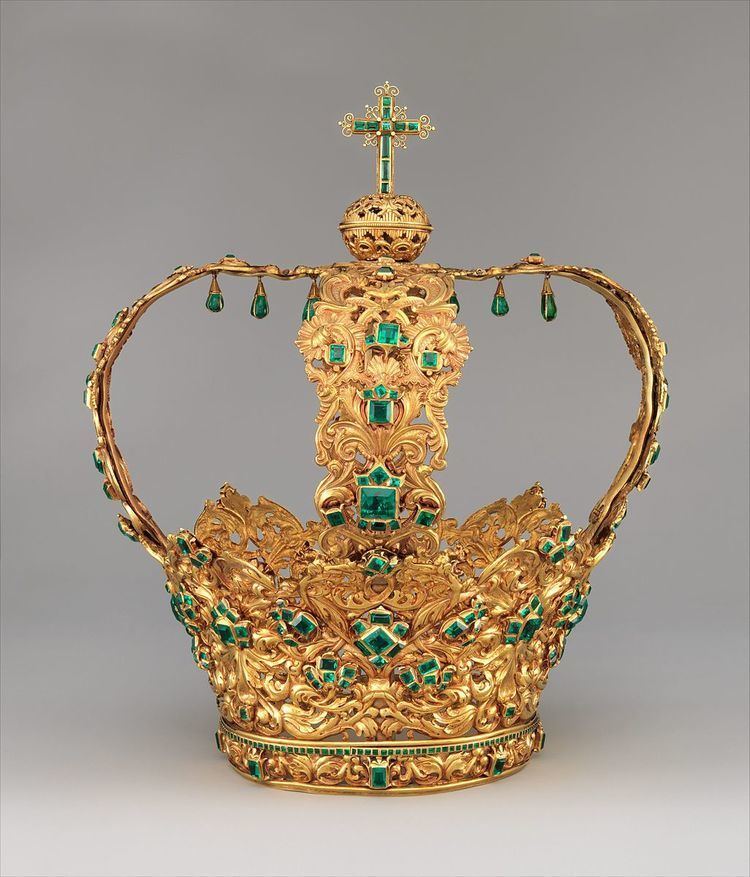 | ||
The Crown of the Andes — known in Spanish as La Corona de los Andes and as La Corona de Nuestra Señora de la Asunción de Popayán — is a votive crown originally made for a larger than life-size statue of the Virgin in the Cathedral of Popayán, Colombia. Originating — at least partly — in the 16th century, it purportedly includes emeralds taken from the captured Inca Emperor Atahualpa (1497–1533). In 1936, the crown was sold by its owners to an American businessman and it has remained in the United States ever since. As of December 2015, the crown belongs to the collection of the Metropolitan Museum of Art in New York City.
Contents
Description
The crown is 34.5 centimetres (13.6 in) high, 52 centimetres (20 in) in circumference, weighs 2.18 kilograms (4.8 lb) in total and is made from 18 - 22 carat gold. There are 450 emeralds on it: the largest, known as the "Atahualpa Emerald", is a rectangular stone measuring 15.8 millimetres (0.62 in) by 16.15 millimetres (0.636 in).
History
Various tales circulate about the construction and origin of the Crown of the Andes. According to the conventional version it was made in the 1590s in thanksgiving for the city of Popayán being spared an outbreak of smallpox then devastating the region. It includes emeralds purportedly taken from the captured Inca Emperor Atahualpa. However, Christopher Hartop — a jewellery expert who examined the crown during a proposed sale at the auctioneer Christie’s in New York in 1995 — suggested then it was a composite piece, parts of which were probably made at different times between the 16th and 18th centuries. The Crown had a long history of use in the Holy Week celebrations in Popayán, until in the early decades of the 20th century papal permission was sought to sell it and dedicate the funds raised to charitable purposes. Permission was given in 1914, but the sellers — the Confraternity of the Immaculate Conception (La Cofradía de la Inmaculada Concepción) — did not find a buyer until 1936 when an American syndicate led by Chicago businessman Warren J. Piper purchased it. At the time Mr. Piper said the crown would be broken up and individual jewels sold off, but this did not happen. Instead the crown was exhibited sporadically over the next few decades, notably at Detroit in 1937 when General Motors used it at the unveiling of their new Chevrolet range: 225,000 people are said to have viewed it on that occasion, some 15% of the city's then population. It was also displayed at the New York World's Fair of 1939 and in 1959 at the Royal Ontario Museum.
The Crown was not sold during the 1995 sale. Afterwards, it is believed to be usually kept in New York, put on display in Indianapolis at an exhibition called Sacred Spain: Art and Belief in the Spanish World, held October 2009 - January 3, 2010 at the Indianapolis Museum of Art. Its acquisition was announced by the Metropolitan Museum in New York City in December 2015.
Although acquired and exported legally, some have suggested that, as the Crown was made in Popayán from local gold and emeralds and used there continually in religious worship for some three centuries, it should be returned to the region where it has most cultural resonance.
